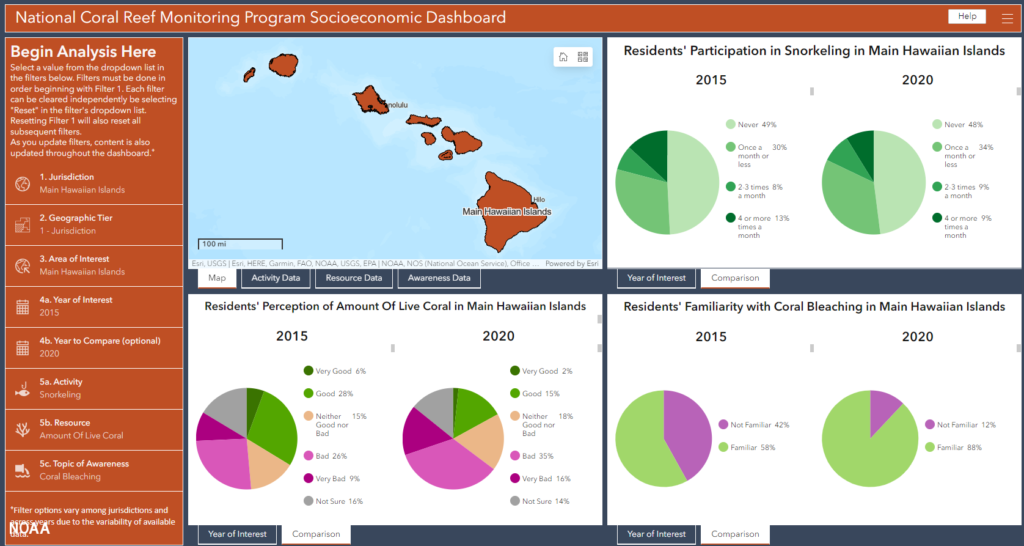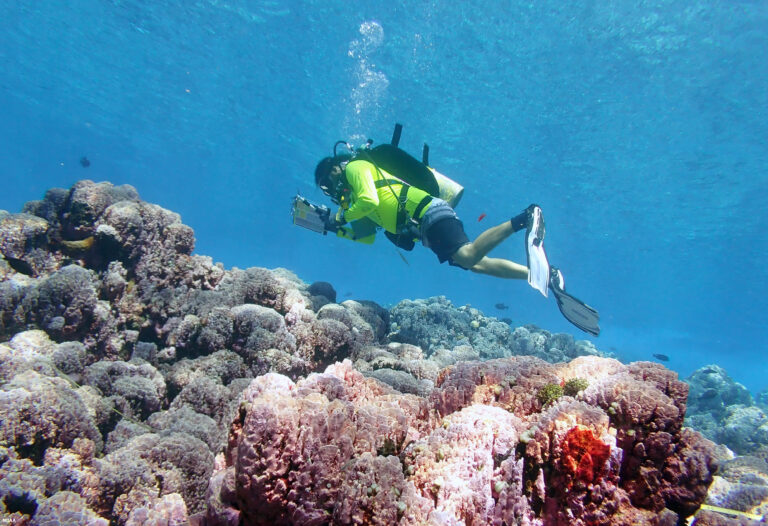NOAA’s National Coral Reef Monitoring Program (NCRMP) has launched a new data visualization tool, which will provide free and easy-to-access information on the status of US coral reefs.
According to the organization, it is the first tool focusing on shallow tropical coral reef data to be hosted on the NOAA GeoPlatform, which is NOAA’s central hub for geospatial data and tools. Now stakeholders, scientists, managers and students have a one-stop information hub to access and understand NOAA’s shallow tropical coral data that they can customize to focus on coral trends across specific timescales, locations, coral or fish species, climate data and socioeconomics.
“NOAA’s coral monitoring activities represent a truly comprehensive array of data and information – from biological and physical characteristics of reefs to insights into how surrounding communities perceive and protect their reef resources,” said Nicole LeBoeuf, assistant administrator at NOAA’s National Ocean Service. “This user-friendly tool represents a leap forward in making our extensive data accessible and analysis-ready.”
NCRMP is reportedly one of the few initiatives in the world to integrate a human dimensions component of research into a coral reef ecosystem monitoring program. This data visualization tool is the first NOAA coral product to feature social parameters as part of a comprehensive analysis of coral status. It can be used to see how residents interact with coral reefs and examine their perceptions of coral reef conditions over time, which are key data points for managers who develop locally appropriate conservation and management strategies.
 Accessing data is a key component of this visualization tool. Users can download streamlined data summaries for each available year at different geographic scales for the first time. Users asked for and received ways to filter and download data in an easy-to-understand format, allowing researchers and decision makers to develop custom data sets with actionable, situation-specific information.
Accessing data is a key component of this visualization tool. Users can download streamlined data summaries for each available year at different geographic scales for the first time. Users asked for and received ways to filter and download data in an easy-to-understand format, allowing researchers and decision makers to develop custom data sets with actionable, situation-specific information.
“This tool is a game-changer,” said Jennifer Koss, director of NOAA’s coral reef conservation program. “To have this data available in an accessible, visual format will enable scientists and managers to make on-the-ground assessment and conservation decisions more easily. This is also a chance for researchers, students and engaged conservationists to gain an understanding of US coral reef ecosystems and how people value them.”
The tool covers data collected since 2013 across four themes: benthic communities (corals, macroalgae and more); fish populations; climate and ocean chemistry; and socioeconomics. It encompasses the diverse range of coral reefs within the nation’s states and territories of Florida, the US Virgin Islands, Puerto Rico, Hawaii, American Samoa, Guam and the Commonwealth of the Northern Mariana Islands. It also includes data from Flower Garden Banks, Florida Keys, Hawaiian Islands Humpback Whale National Marine Sanctuaries, the National Marine Sanctuary of American Samoa, the Pacific Remote Islands and Papahānaumokuākea Marine National Monuments.
To find out more about NOAA’s latest developments, click here.



